#Grand Duchess Helena Vladimirovna of Russia
Explore tagged Tumblr posts
Text

Imperial Weddings during the Romanov Reign
The bridal ensemble of a Romanov imperial bride was always the same. It could not deviate from the regulations estipulated by the imperial code. They wore dresses made of cloth of silver or gold, with jeweled buttons down the skirt, topped by a velvet and ermine mantle.
Their diamond accessories included the grand tiara made for Empress Elizabeth, which featured the Paul I Pink Diamond, as well as the Nuptial Crown, the Cherry Earrings, the Diamond Necklace, the Diamond Bracelet, and the Cloak Clasp, which had been made for Catherine the Great. A royal wedding outfit weighed 25-30 kg. Standing still in it all day was difficult, let alone moving around! Sometimes the exhausted brides had to be carried.
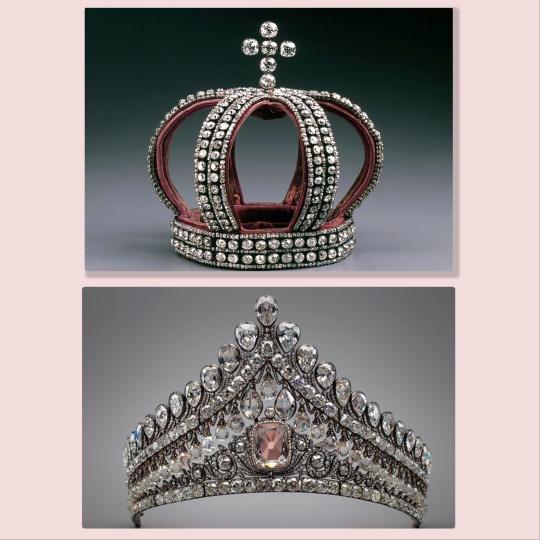
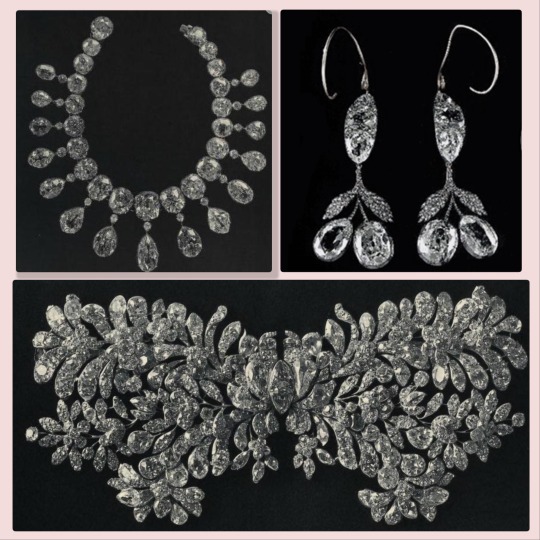
According to tradition, brides in the Romanov family donated their wedding dresses to the church afterward. However, Alexandra Feodorovna, the last empress of Russia, decided to keep hers. That is why her wedding dress has survived to this day (it is on exhibition in the Hermitage.) This was considered an omen of bad luck.
Since Queen Victoria could not attend the wedding of her beloved granddaughter Alix in Russia, her other granddaughter, Alexandra's sister, Grand Duchess Elizabeth Feodorovna, sketched Alix’s wedding dress without the jewels and the velvet cloak and sent the sketch to their grandmother with a letter. In the letter, she discusses the lace veil worn by Alix as her bridal veil. It was the same lace wedding veil worn by her mother, Princess Alice of the United Kingdom, and her sisters, Princess Victoria, Grand Duchess Ella, and Princess Irene. See the sketches below.

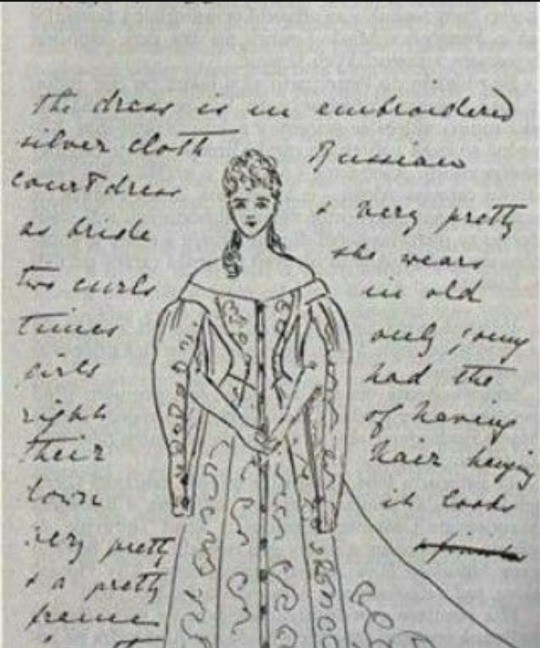

Towards the end of the Romanov tenure as rulers of Russia, regulations relaxed somewhat. Nicholas II's sister Olga, who was notoriously rebellious regarding protocol, did not conduct her first wedding according to the imperial code and wore a regular wedding dress and none of the jewels. Her second wedding years later was even more casual. Prince Marie of Greece and Denmark (to become Grand Duchess Marie Georgevna by marriage) refused to get married in Russia or wear the wedding regalia, although she wore Russian court dress. The tradition had been for all imperial women to marry at the chapel in the Winter Palace, and it was not broken even for Queen Victoria, who could not travel so far by the time her second son, Prince Alfred Ernest, married Grand Duchess Maria Alexandrovna, the daughter of Emperor Alexander II.

#Grand Duchess Olga Alexandrovna#Grand Duchess Xenia Alexandrovna#Empress Alexandra Feodorovna#Grand Duchess Marie Georgievna#Grand Duchess Maria Palvolvna the Younger#Grand Duchess Helena Vladimirovna#Grand Duchess Elizabeta Mavrikievna#Grand Duchess Maria Alexandrovna#imperial art#imperial weddings#russian history#imperial russia#Romanov family#Romanov wedding jewels
13 notes
·
View notes
Photo
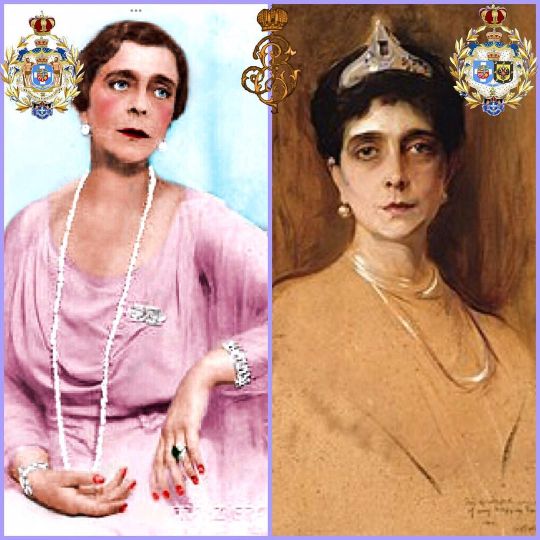
66 years since the death of HI&RH Princess Helena of Greece and Denmark Grand Duchess Elena Vladimirovna of Russia (29 January 1882 – 13 March 1957). Princess Helena was the only daughter and youngest child of Grand Duke Vladimir Alexandrovich of Russia and Duchess Marie of Mecklenburg-Schwerin. Her husband was Prince Nicholas of Greece and Denmark and they were both first cousins of Emperor Nicholas II of Russia. They had 3 children : 1)Princess Olga of Greece married Prince Paul of Yugoslavia; 2)Princess Elizabeth of Greece married Count Karl Theodor zu Toerring-Jettenbach, son of Duchess Sophie in Bavaria and scion of an old and rich Bavarian mediatized family; and 3)Princess Marina of Greece married the Prince George, Duke of Kent in November 1934.She was also first cousin of Queen Juliana of the Netherlands and Alexandrine of Mecklenburg-Schwerin, Queen consort of Denmark and the grandmother of Prince Edward, Duke of Kent, Princess Alexandra, the Honourable Lady Ogilvy, and Prince Michael of Kent. Princess Elena became a widow early in 1938, as Prince Nicholas suffered a heart attack and died suddenly. She remained in Greece throughout the Second World War, dying there in 1957 and she is buried in the Royal Cemetery in Tatoi Royal Estate close Athens. #royal #royalty #royals#greekroyals#greekroyalfamily#danishroyals#danishroyalfamily#queenannemarie#crownprincessmariechantal#princessmariechantal#crownprincepavlos#princepavlos#kingconstantine#princessmarieolympia#princessolympia#princeconstantinealexios#princenikolaos#princesstatiana#princeachileasandreas#princeodysseaskimon#princearistidesstavros #princephilipos #princessnina #princesstheodora#queenofgreece #princessofgreece#princeofgreece #dukeofsparta#kingofgreece https://www.instagram.com/p/CpuKKvLoaa9/?igshid=NGJjMDIxMWI=
#royal#royalty#royals#greekroyals#greekroyalfamily#danishroyals#danishroyalfamily#queenannemarie#crownprincessmariechantal#princessmariechantal#crownprincepavlos#princepavlos#kingconstantine#princessmarieolympia#princessolympia#princeconstantinealexios#princenikolaos#princesstatiana#princeachileasandreas#princeodysseaskimon#princearistidesstavros#princephilipos#princessnina#princesstheodora#queenofgreece#princessofgreece#princeofgreece#dukeofsparta#kingofgreece
5 notes
·
View notes
Photo


Bridesmaids of Duchess Alexandrine of Mecklenburg in the day of her wedding with Prince Christian of Denmark, later King Christian X. Cannes, 1898
Photo 1, from L to R
Princess Olga of Hannover, Grand Duchess Helena Vladimirovna of Russia, Duchess Cecilie of Mecklenburg Schwerin , ?
Photo 2, from L to R
Princess Thyra of Denmark, Princess Alexandra of Hannover, Princess Marie of Hannover , ?
#Antique#vintage#Victorian#1890s#Victorian fashion#19th century#bridesmaid#Wedding#Royalty#Grand Duchess Alexandra of Mecklenburg Schwerin#Duchess Marie of Baden#Princess Olga of Hannover#Grand Duchess Helena Vladimirovna of Russia#Crown Princess Cecilie of Prussia
347 notes
·
View notes
Photo








Tsarinas Consorts of the Romanov House.
Maria Vladimirovna - Maria was born in 1601 and was the first wife of Tsar Michael I. She was selected for marriage to Michael by his mother, Xenia Shestova, after several years of difficulty of finding a partner for the Tsar. The wedding took place on 19 September 1624. Not long after the wedding, the Tsarina took ill. She died on 17 January 1625, four months after the wedding. There were rumors at the time that she had been poisoned by fractions at court determined to prevent any potential pro-Rurikid influence, or by the enemies of her father’s family.
Eudoxia Lukyanovna - Eudoxia was born in 1608 and was the second wife of Tsar Michael I. She was among those daughters of the nobility summoned to appear in the Bride-show at court, when the tsar was to select his new tsaritsa, after his first spouse had died. He eventually chose Eudoxia because of her beauty, polite behavior and mild disposition. She was described as a modest and virtuous girl, dominated by her proud relatives, who sometimes brought her to tears but still did not complain. The wedding was conducted on 5 February 1626. After the wedding, she was given several lands, and a substantial fortune of her own. Eudoxia and Michael became parents of 10 children, including the future Tsar Alexei I.
Maria Ilyinichna - Maria was born in 1624 and was the first wife of Tsar Alexei I. The tsar was to choose his bride from a bride-show of hundreds of daughters of the nobility, Maria was selected as the tsar's second choice after his first choice to marry Euphemia Fedorovna Vsevolozhskaya was annuled. Maria was reportedly a beauty. The wedding was conducted in 16 January 1648 in Moscow and the union is described as a happy one. The couple had 13 children, including Tsar Feodor III of Russia, Tsar Ivan V of Russia, and the Princess Regent Sophia Alekseyevna.
Natalya Kirillovna - Natalya was born in 1651 and was the second wife of Tsar Alexei I. In March 1669, Tsar Alexis’ first wife, Tsarina Maria, died during the birth of what would have been their fourteenth child. The Tsar supported by the Russian public, although not by the family of Maria, decided to remarry in the hope of producing more potential heirs. The tsar arranged an inspection of women he considered eligible in early 1670, Natalya was added to this inspection following an encounter with the tsar at the home of her adoptive father, Artamon Matveyev. Alexis was impressed by Natalya's beauty, and selected her to be his bride without needing to go ahead with a planned second inspection. The couple married on 1 February 1671. Alexis and Natalya had a happy marriage, spending much of their time together in various palaces and villas around Moscow. The couple became parents of the future Tsar Peter the Great.
Agafiya Semyonovna - Agafiya was born in 1663 and was the first wife of Tsar Feodor III. In 1680, Tsar Feodor, saw her during a religious procession: when she fainted after the sight of a witch in a religious theater play he rushed forward to support her, and fell in love with her. Aware that her uncle did not wish her to marry, a traditional summon was proclaimed to all unmarried noble women to gather for Feodor to choose from, and he chose her. On 18 July 1680, she married Feodor. Agafya has been described as merciful and loyal to her husband and the public's welfare. She could speak and write Polish, French and Latin and was well informed about the Western European life style. She could also play harpsichord. She was described as beautiful as "an angel of heaven", with an easy going character. She was the first to advocate beard-shaving and the adoption of Western clothes at the Russian court. She herself was the first Tsarina to expose her hair and to wear a Western (Polish) dress. Agafya died as a consequence of the childbirth, and six days later, the nine-days-old Tsarevich Ilya also died. She was reportedly deeply mourned by Feodor.
Marfa Matveyevna - Marfa was born in 1664 and was the second wife of Tsar Feodor III. She was the daughter of Matvey Vasilyevich Apraksin and Domna Bogdanovna Lovchikova. She and Feodor were married on 14 February 1682, and he died only a few months later in April.
Praskovya Fyodorovna - Praskovya was born in 1664 and was the only wife of Tsar Ivan V. The marriage of Ivan V was arranged by his sister, the regent Sophia. Ivan V himself reportedly showed no inclination toward marriage and according to the Swedish diplomat Hildebrandt Horn, Praskovia was not willing to marry Ivan, but was forced to consent. The wedding took place on 9 January 1684, with the Patriarch John officiating as the ceremony. Praskovia Saltykova was at the time of her marriage described as a healthy Russian beauty, tall, with a full figure and long thick hair, as a person, she was described as religious, superstitious and not very well educated. Praskovya and Ivan had five daughters including Empress Anna of Russia.
Eudoxia Feodorovna - Eudoxia was born on 1669 and was the first wife of Tsar Peter I (the Great). She was chosen as a bride for the Tsar by his mother Natalya. She was crowned Tsarina in 1689. The Tsar could not stand her conservative relatives and soon abandoned her for a Dutch beauty, Anna Mons. Eudoxia's letters to Peter were full of complaints and exhortations of unrequited love. She was the paternal grandmother of Peter II of Russia.
Catherine Alexeyevna - Catherine was born on 1684 and was the second wife of Tsar Peter I (the Great). She was originally named Marta Helena Skowrońska, In 1705,she converted to Orthodoxy and took the new name of Catherine Alexeyevna. Afterwards she became part of the household of Prince Alexander Menshikov, who was the best friend of Peter the Great of Russia. Anecdotal sources suggest that she was purchased by him. In 1704, she was well established in the Tsar's household as his mistress, and gave birth to a son, Peter. Though no record exists, Catherine and Peter are described as having married secretly in St. Petersburg in 1707. Peter married her again (this time officially) at Saint Isaac's Cathedral in St. Petersburg in 1712; she took the style of her husband and became Tsarina. They had 12 children. Peter died on 1725 without name a successor and Catherine was chosen as Empress Regnant.
Catherine Alekseyevna - Catherine was born in Prussia as Princess Sophie of Anhalt-Zerbst on 1729 and was the only wife of Tsar Peter III. The choice of Sophie as wife of her second cousin, the prospective Tsar Peter, resulted from some amount of diplomatic management in which Count Lestocq, Peter's aunt (and the ruling Russian Empress) Elizabeth and Frederick II of Prussia took part. Lestocq and Frederick wanted to strengthen the friendship between Prussia and Russia to weaken Austria's influence and ruin the Russian chancellor Bestuzhev, on whom Empress Elizabeth relied, and who acted as a known partisan of Russo-Austrian co-operation. The diplomatic intrigue failed, largely due to the intervention of Sophie's mother, Johanna Elisabeth of Holstein-Gottorp. Historical accounts portray Johanna as a cold, abusive woman who loved gossip and court intrigues. Despite Johanna's interference, Empress Elizabeth took a strong liking to Catherine, who, on arrival in Russia in 1744 spared no effort to ingratiate herself not only with Empress Elizabeth, but with her husband and with the Russian people as well. The long-planned dynastic marriage finally occurred on 21 August 1745 in Saint Petersburg. Sophie had turned 16; The newlyweds settled in the palace of Oranienbaum, which remained the residence of the "young court" for many years to come. In 1762 Peter died and Catherine took the throne as Catherine II. Peter and Catherine were parents of Tsar Paul I.
Maria Feodorovna - Maria was born in Prussia as Duchess Sophie Dorothea on 1759 and was the second wife of Tsar Paul I. In 1776, when Grand Duke Paul (the future Paul I of Russia), became a widower, Sophie Dorothea was chosen by Frederick II of Prussia, her maternal great uncle, and by Empress Catherine II of Russia, as the ideal candidate to be Paul’s second wife. They met in a state dinner in Berlin and their engagement was quickly arranged.Sophie Dorothea arrived in St Petersburg that September, converted to the Russian Orthodox Church, and took the name Maria Feodorovna. She married Paul on 26 September 1776. In spite of her husband's difficult character, Maria Feodorovna made a success of her marriage. Paul and Maria lived at Gatchina. They were devoted to each other and had ten children including: Tsar Alexander I, Tsar Nicholas I of Russia, Grand Duchess Maria of Saxe-Weimar-Eisenach, Queen Catherine of Wurttemberg and Queen Anna of the Netherlands.
Elizabeth Alexeievna - Elizabeth was born on 1779 in Germany as Princess Louise Maria Auguste of Baden and was the only wife of Tsar Alexander I. Catherine the Great was looking for a bride for her eldest grandson, the future Alexander I, and set her eyes on the Princesses of Baden, so Catherine invited Princess Louise and her younger sister Frederica, who later became Queen of Sweden, to Russia. In the autumn of 1792, the two sisters arrived in St. Petersburg. The Empress was delighted by Louise, finding her a model of beauty, charm, and honesty. Louise herself was attracted to Alexander, who was handsome. At first, Alexander was shy with his future bride — very young and inexperienced, however, the young couple soon grew fond of each other. The Princess learned Russian and converted to the Orthodox Church. The wedding took place on 28 September 1793. "It was a marriage between Psyche and Cupid", Catherine wrote to the Prince of Ligne. Elizabeth was only fourteen, her husband a year older.
Alexandra Feodorovna - Alexandra was born in Berlim as Princess Friederike Luise Charlotte Wilhelmine of Prussia on 1798 and was the only wife of Tsar Nicholas I. In 1814, Nicholas Pavlovich, future Tsar of Russia, and his brother Michael Pavlovich, visited Berlin. Arrangements were made for Nicholas to marry Charlotte, then fifteen years old, to strengthen the alliance between Russia and Prussia. On a second visit the following year, Nicholas fell in love with the then-seventeen-year-old Princess Charlotte. The feeling was mutual, "I like him and am sure of being happy with him." She wrote to her brother. On June 1817 Charlotte came to Russia with her brother William. After arriving in St. Petersburg she converted to Russian Orthodoxy, and took the Russian name "Alexandra Feodorovna". On her nineteenth birthday, on July 1817, she and Nicholas were married in the Grand Church of the Winter Palace. The couple had 7 children including Tsar Alexander II.
Maria Alexandrovna - Maria was born as Princess Maximiliane Wilhelmine Auguste Sophie Marie of Hesse and by Rhine on 1824 and was the first wife of Tsar Alexander II. In 1839, the Tsarevich Alexander, traveled to western Europe to complete his education and to search for a wife. He stopped for one day in Darmstadt during the evening, invited to the Opera house by the Grand Duke of Hesse, Alexander was introduced to Princess Marie. Alexander was smitten by her. In June of 1939, he returned to Darmstadt to seal his engagement with Princess Marie. The Princess was received into the Russian Orthodox Church on December 1840 and became Grand Duchess Maria Alexandrovna. The wedding took place on 28 April, 1841. The couple had 8 children including Tsar Alexander III.
Maria Feodorovna - Maria was born on 1847 at Denmark as Princess Marie Sophie Frederikke Dagmar and was the only wife of Tsar Alexander III. In 1864, Tsarevich Nicholas went to Denmark where he was betrothed to Dagmar. On April 1865 he died from meningitis. His last wish was that Dagmar would marry his younger brother, the future Alexander III. Dagmar was distraught after her young fiancé's death. The disaster had brought her very close to "Nicholas’" parents, and she received a letter from Alexander II in which the Emperor attempted to console her. In June 1866, while on a visit to Copenhagen, the Tsarevich Alexander asked Dagmar for her hand. They had been in her room looking over photographs together. She converted to Orthodoxy and became Grand Duchess Maria Feodorovna. The wedding took place on November 1866 in the Imperial Chapel of the Winter Palace in Saint Petersburg. The couple had 6 children including Tsar Nicholas II.
Alexandra Feodorovna - Alexandra was born on 1872 in Darmstadt as Princess Alix Viktoria Helene Luise Beatrix of Hesse and by Rhine and was the only wife of Tsar Nicholas II. Nicholas and Alix had first met in 1884 at the wedding of Nicholas's Uncle Sergei and Alix's sister Elisabeth in St. Petersburg. When Alix returned to Russia on a several week visit in 1889, the two young people fell in love. Initially Nicholas's father, Tsar Alexander III, refused the prospect of their marriage. Alexander and his wife were both vehemently anti-German, and did not want the match with Princess Alix. While in good health, Alexander III ignored his son's demands, but began to relent when his health began to fail. In 1894 Nicholas proposed to Alix. She initially rejected him on the grounds of her refusal to convert to Orthodoxy. However, after pressure from the Kaiser, who had told her that it was her duty to marry Nicholas she accepted his second proposal. Alexandra and Nicholas were wed in the Grand Church of the Winter Palace of St Petersburg on 26 November 1894. The marriage that began that night remained exceptionally close until the pair was assassinated in 1918. The marriage was outwardly serene and proper, but based on intensely passionate physical love.
#Tsarina maria vladimirovna#tsarina eudoxia#tsarina maria ilyinichna#tsarina natalya#tsarina agafiya#tsarina marfa#Catherine the Great#catherine i#tsarina maria alexandrovna#tsarina maria feodorovna#elizabeth alexeievna#maria feodorovna#tsarina alexandra#empress alexandra
146 notes
·
View notes
Photo

Grand Duchess Elena Vladimirovna & Prince Nicholas of Greece. “A royal bride and bridegroom--the Grand Duchess Helena, daughter of the Grand Duke Vladimir of Russia, and her husband, Prince Nicholas, third son of the King of Greece.”
#romanov#greek royal family#vladimirovichi#elena vladimirovna#nicholas of greece#old magazines#my collection
32 notes
·
View notes
Text

Wedding of Prince Christian of Denmark and Duchess Alexandrine of Mecklenburg-Schwerin on 26 April 1898 in Cannes,France.
Left to right : Princess Olga of Cumberland, Grand Duchess Helena of Baden, Duchess Cecilie of Mecklenburg-Schwerin, Mademoiselle Scalon, Duchess Alexandrine of Mecklenburg-Schwerin,Prince Christian of Denmark, Princess Thyra of Denmark, Princess Alexandra of Cumberland, Princess Marie Louise of Cumberland and Princess Curoussof.
📌 Grand Duchess Elena Vladimirovna Romanova of Russia and Duchesses Alexandrine and Cecilie of Mecklenburg-Schwerin are first cousins.
📌 Duchesses Alexandrine and Cecilie of Mecklenburg-Schwerin are the daughters of Grand Duchess Anastasia Mikhailovna Romanova of Russia.
📌 Prince Christian and Princess Thyra of Denmark are Empress Marie Feodorovna of Russia's nephew and niece by her brother Frederick
📌 Princess Olga,Alexandra and Marie Louise of Cumberland are the nieces of Empress Marie Feodorovna of Russia by her sister,Thyra
0 notes
Text



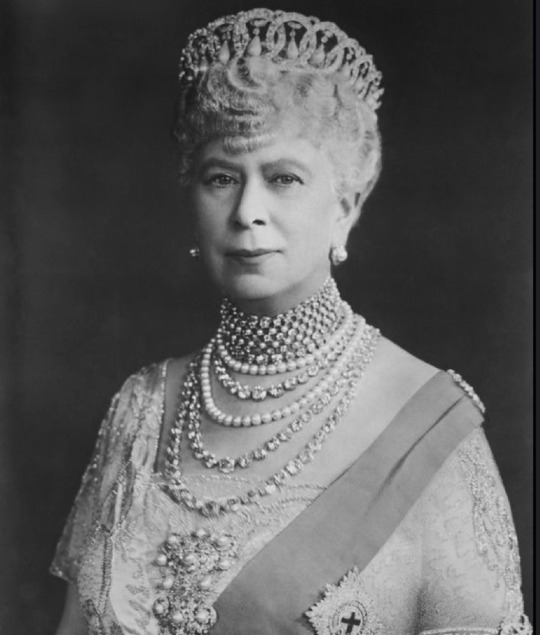
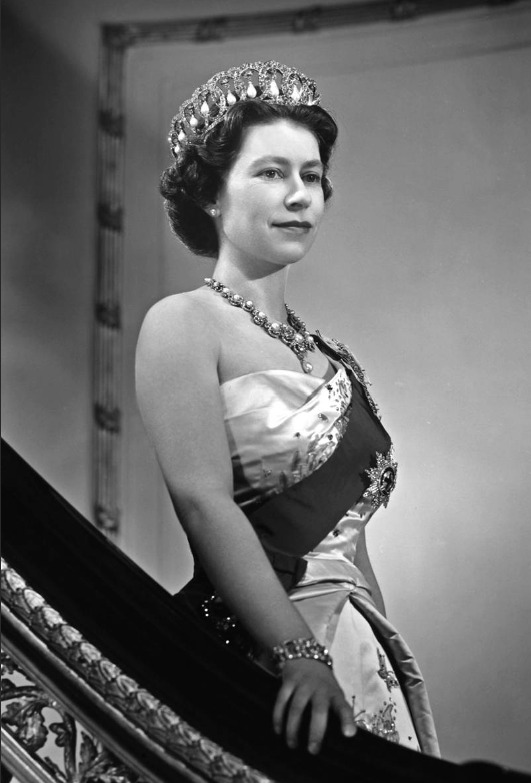
A Brief History of the Vladimir Tiara (and a little survey about who has worn it best)
The "Vladimir Tiara" was commissioned by Grand Duke Vladimir Alexandrovich (younger brother of Alexander III) from Bolin (Romanov's court jeweler) around the time of his wedding to his wife, Grand Duchess Maria Pavlovna the elder (also known as Grand Duchess Vladimir.) Vladimir and Miechen, as she was known, was a formidable couple who ran a rival court to that of Nicholas II.
When the end came and the Grand Duchess had to flee Saint Petersburg, the tiara was left in a safe well hidden in her Moorish boudoir in her palace in Saint Petersburg. It was later smuggled out of the palace by her son Boris and a British art dealer (that in itself is a whole saga,) taken out of Russia and deposited in a bank in England. The Vladimir Tiara was inherited by Miechen's only daughter, Grand Duchess Helena Vladimirovna (Princess of Greece through marriage.) When Helena was ready to sell it, Queen Mary of the United Kingdom was ready to buy it. The jewel needed repairs which its new owner quickly executed. When Queen Mary died, her grandaughter, Elizabeth II of England, inherited the piece. To judge by the many times she has worn it, it was one of her favorites.
Grand Duchess Helena, Princess of Greece, does not seem to have worn her mother's famous tiara. I have not found any photographs of the Queen Mother, Princess Diana of Wales, the Duchess of Cambridge, or Camilla, Queen Consort, wearing the Vladimir Tiara. The tiara that I have seen on Diana, Cate, and Camilla, which is somewhat similar, is the "Lovers Knot" (I made an error and described Diana wearing the Vladimir, when she was, in fact, wearing the Lover's Knot, and had to correct this note.) Let's see in whose head this beautiful tiara alights next!
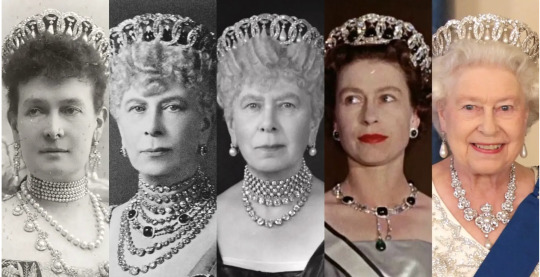
Thank you so much for answering the following survey (entirely for fun.)
#Romanov#Romanov Family#Queen Mary of the United Kingdom#Queen Elizabeth II#Grand Duchess Maria Pavlovna#Grand Duchess Helena#The Vladimir Tiara
7 notes
·
View notes